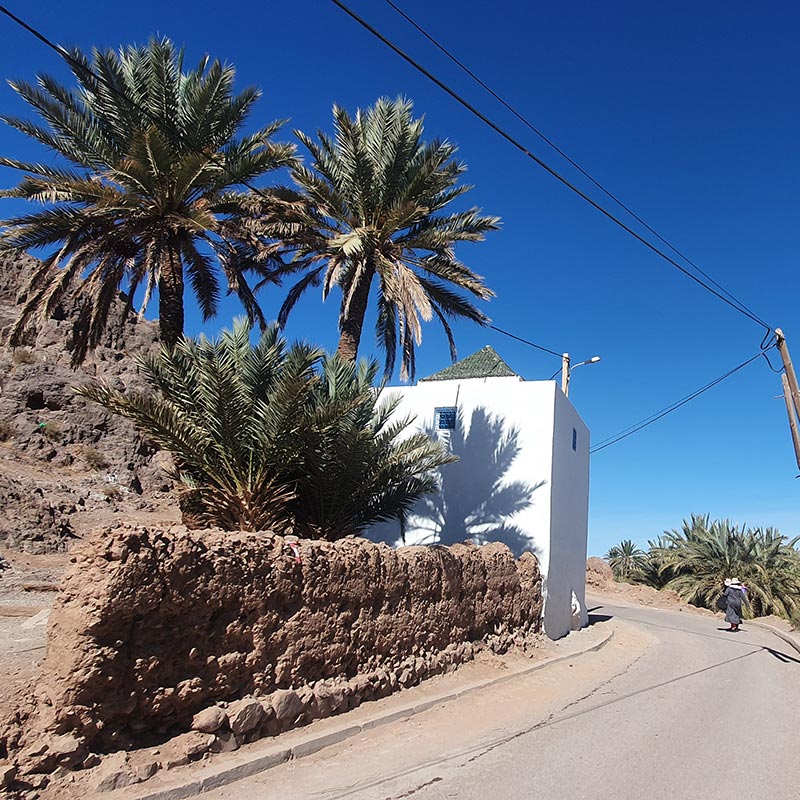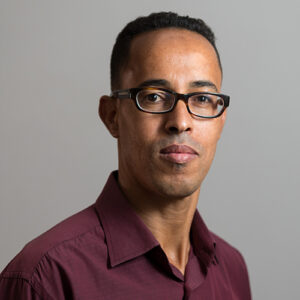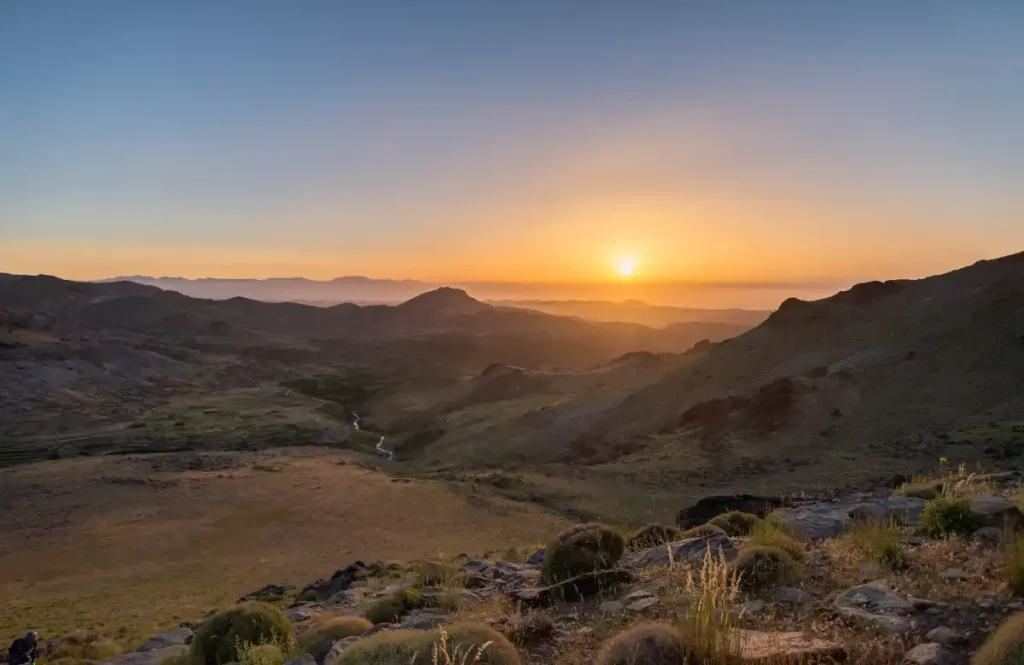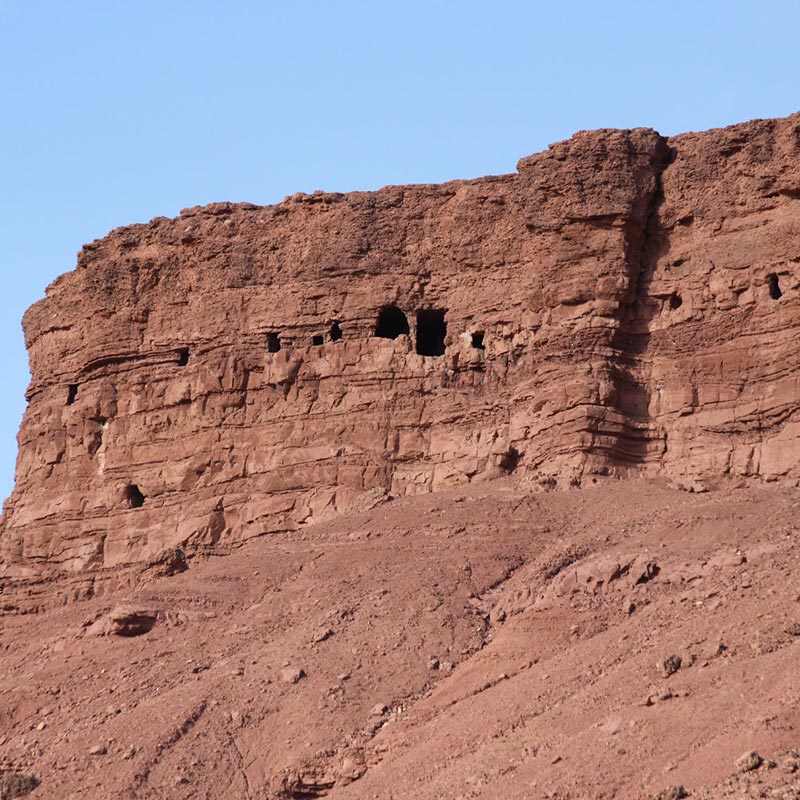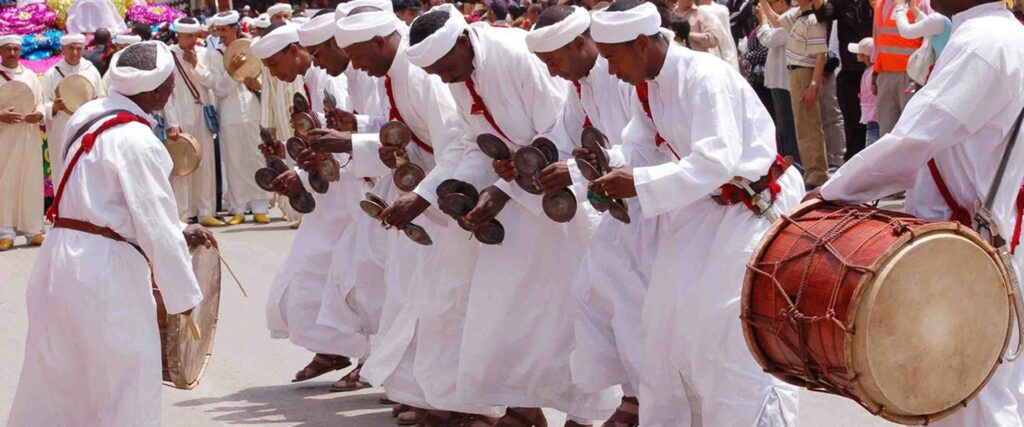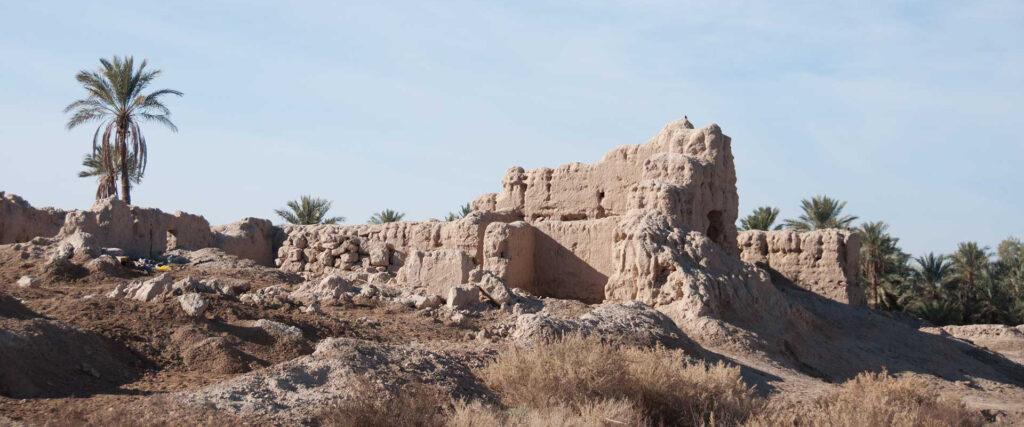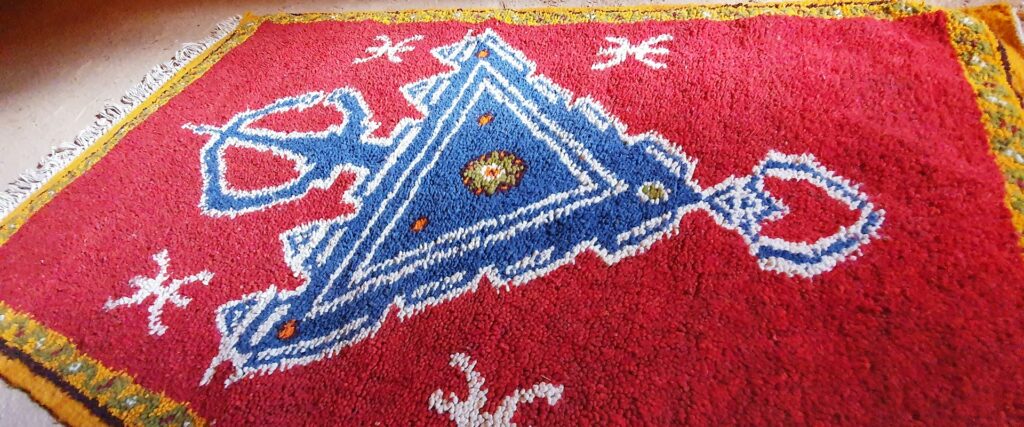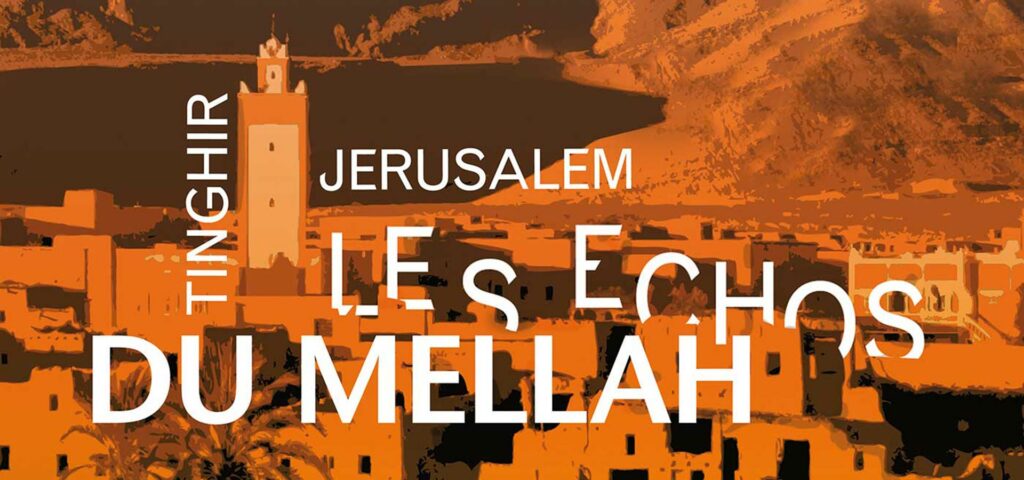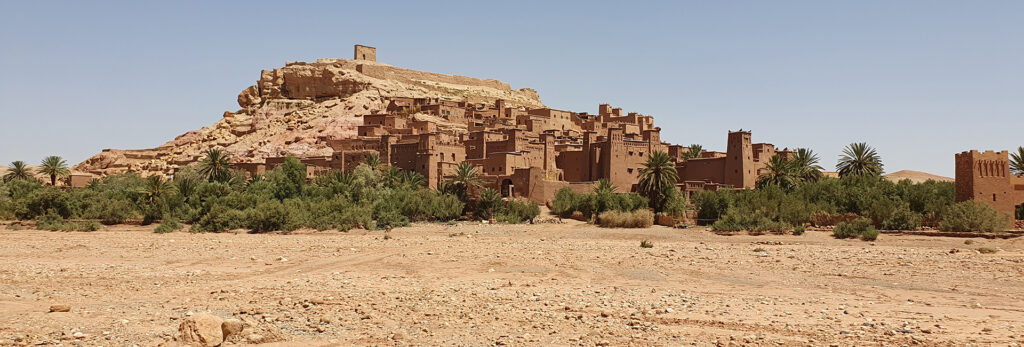According to oral tradition, it houses the body of a deceased saint named Yaâcoub or Jacob, whose origins are unknown. Throughout history, communities of both Muslim and Jewish faiths have revered him.
According to custom, women from neighboring villages or passing through stop at the foot of this wall to engage in an intercessory ritual unique to the female community. They slip some stones into the crevices between the different stones of the wall. Then they deposit their laments and wishes, most often in the form of sung prayers.
As a child, I accompanied my mother to her ancestral village of Tazroute. Regular family visits that filled me with joy, although the distance to walk was exhausting. We walked more than three kilometers.
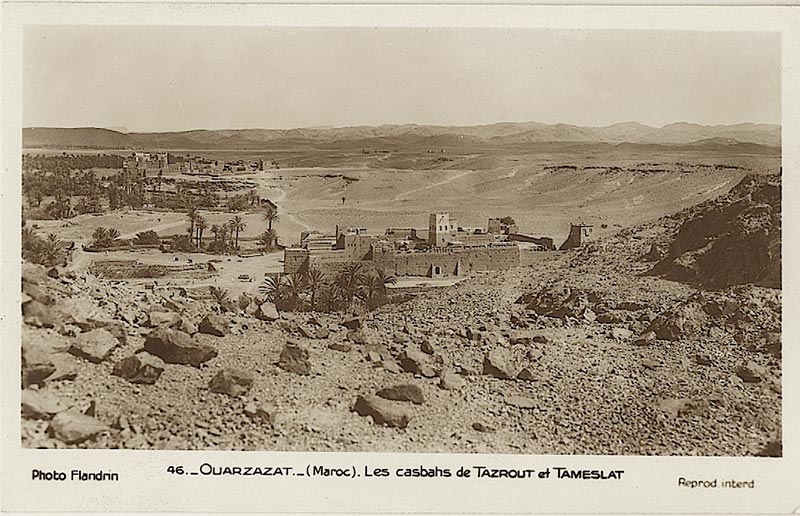
I remember as if it were yesterday the women on this dirt track traced by repeated footsteps. These women always walked carrying a basket, a bowl on their heads, a bundle of grass, or a child clinging to their backs, others bent under the weight of jugs to be carried for hours on end. Mothers carried with them their children, their thin bodies clad in tirelessly mended dresses, their tufts of hair like crests atop shaved and sun-tanned skulls.
My mother never missed the ritual of meditating against the wall of Moulay Yaâcoub, just like the other pilgrims who came, from morning till night, to lament by this saint as if to deposit their burning and secret sadness there.
For all these women, this place was like a refuge. They implored its host in moments of despair with a deep hope that he would come to relieve them.
I see them reciting a rosary of barely audible and vague words. Hands gently placed on the wall’s edge. Tongues then loosen and hearts open.
Did all these women come to celebrate each the funerals of their days and hopes, to entrust their misfortunes to these mute walls? So many tears have fallen here, like drops of an incessant and silent rain. They still echo through time, in the wells of our memories.
Some women have left forever, others have aged. And I have aged over the seasons. But through all this time, I have kept these childhood memories.
Like in the past, I recently came to visit these dilapidated walls to revive this fragment of my roots.
I recognized the familiar face of one of these women, though sculpted by wrinkles, the body bent by old age. This faithful neighbor of Moulay Yaâcoub’s final resting place confided in me in turn:
« I used to take care of the cleanliness of Moulay Yaâcoub. Every Friday, I would sweep away the dust with my palm leaf broom, then water the area. Finally, I would perform my prayer. One day, on the eve of Eid Al-Fitr, the Muslim holiday marking the end of Ramadan fasting, I lacked new clothes to wear on the day of the celebration. So, I went to the saint to pray for help. Upon crossing the threshold, I saw his tomb covered with a brand new cloth, certainly offered by a benefactor. I took this beautiful fabric and made a nice caftan for the ceremony. And I covered the tomb with another green cloth. Saint Moulay Yaâcoub had answered my prayer. »
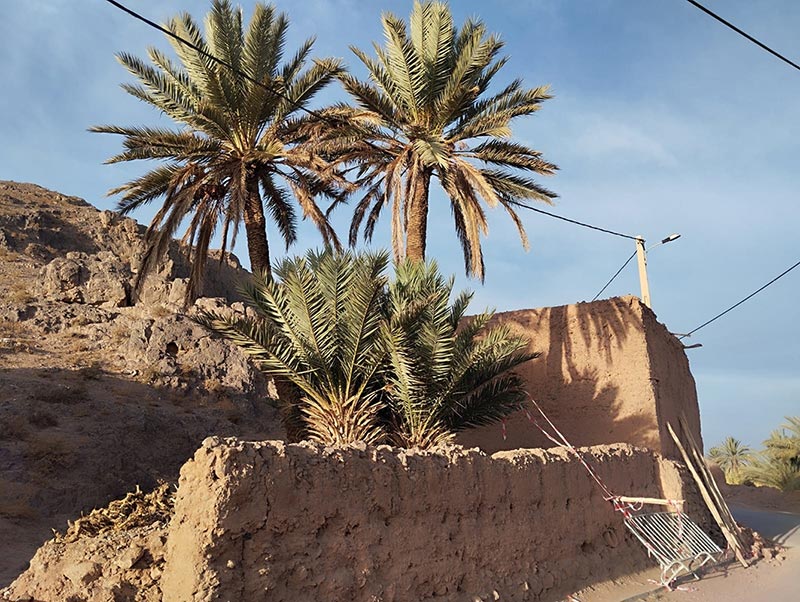
Moulay Yaâcoub, the confidant, the protector, the savior, the healer, the miraculous… but also a simple earthen ruin standing steadfastly at the foot of the rock. Our mothers entrusted him with their most intimate secrets, those kept in amulets and other talismans. Their hearts still slumber there.
Upon these walls, they wept, and their tears flow as if their overflow were a sunset.
